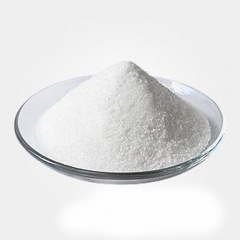Professional industry ceramic supplier, silicon nitride, silicon carbide, aluminum nitride and any other kinds of ceramics.
What is a sensor?
The sensor is a detection device composed of sensitive elements and conversion elements. It can feel the measurement, and can output the detected and sensed information according to a certain electrical signal (voltage, current, frequency or phase, etc.) rules, and finally become a thing. Networked data analysis and artificial intelligence applications provide data sources. High temperature resistant aluminum nitride ceramic metalized substrate
The high temperature resistant aluminum nitride ceramic substrate is a high thermal conductivity aluminum nitride ceramic substrate with high thermal conductivity. Metallization generally includes copper plating, gold plating, copper plating, and immersion gold.

Manufacturing process of aluminum nitride ceramic substrate
There are DPC copper plating process, DBC copper clad process, low-temperature sintering metallization process and high-temperature sintering metallization process, and AMB magnetron sputtering process. DPC aluminum nitride ceramic substrates are more suitable for precision, miniaturization, and integrated ceramic circuit boards. The production cost of DBC is relatively low, can be mass-produced, and has a wide range of applications in many fields. It can be used not only for copper plating, but also for copper plating. Jin Ruixin can also make gold tin alloy and platinum.
Ceramic substrate refers to a special crafted board where copper foil is directly attached to the surface of a ceramic substrate (single-sided or double-sided) at a high temperature. Aluminum nitride ceramic substrate is a substrate made of aluminum nitride ceramic as the main raw material. As a new type of ceramic substrate, aluminum nitride ceramic substrate has the characteristics of high thermal conductivity, good mechanical properties, corrosion resistance, excellent electrical properties, and good solderability. It is an ideal large-scale integrated circuit heat dissipation substrate and packaging material.
Overview of aluminum nitride AlN ceramic microspheres
Ceramic spherical aluminum nitride was first synthesized in 1877. In the 1980s, AlN ceramic microspheres, as ceramic insulators, were widely used in the field of microelectronics due to their high heat transfer. Unlike beryllium oxide, AlN ceramic microspheres are non-toxic. Ceramic spherical aluminum nitride is treated with metal and can be used as a substitute for aluminum oxide and beryllium oxide in a large number of electronic instruments. Spherical ceramic AlN can be prepared by reducing aluminum oxide and carbon or directly nitriding metal aluminum. Aluminum nitride ceramic microspheres are a material connected by covalent bonds. It has a hexagonal crystal structure with the same shape as zinc sulfide and wurtzite. Industrial grade materials can only be made by hot pressing and welding. This material is very stable in an inert high temperature environment.
Application of Aluminum Nitride AlN Ceramic Microspheres
1. After the second laser melting and spherical alloying, the obtained AlN ceramic microspheres have uniform size and good fluidity, which improves the thermal conductivity and insulation of the material;
2. After melting, the AlN surface ceramic microspheres are treated with anti-hydrolysis and anti-oxidation, and the thermal conductivity will exist for a long time after being added.
3. Ceramic spherical aluminum nitride has good injection molding properties; used in composite materials, it has good matching and good interface compatibility with semiconductor silicon, which can improve the mechanical properties and thermal conductivity of composite materials;
4. Application in high thermal conductivity plastics: Modified AlN ceramic microspheres can greatly improve the thermal conductivity of plastics. At present, it is mainly used for PVC plastics, polyurethane plastics, PA plastics, PP plastics, functional plastics, etc.
Aluminum Nitride AlN Ceramic Microsphere Price
The price of spherical aluminum nitride AlN particles varies randomly with factors such as production cost, transportation cost, international situation, exchange rate, and market supply and demand of spherical aluminum nitride AlN particles. Tanki New Materials Co., Ltd. aims to help various industries and chemical wholesalers find high-quality, low-cost nanomaterials and chemicals by providing a full set of customized services. If you are looking for spherical aluminum nitride AlN particles, please feel free to contact me to get the latest price of spherical aluminum nitride AlN particles.
Supplier of Aluminum Nitride AlN Ceramic Microspheres
As a global supplier of aluminum nitride AlN ceramic microspheres, Tanki New Materials Co. Ltd has extensive experience in the performance, application and cost-effective manufacturing of advanced and engineered materials. The company has successfully developed a series of powder materials (disilicide Molybdenum, lanthanum nitride (LaN powder, calcium silicide, iron boride), high-purity targets, functional ceramics and structural devices, and provide OEM services.
Aluminum Nitride Microsphere Properties |
|
| Other Names | Aluminium nitride |
| CAS No. | 24304-00-5 |
| Compound Formula | AlN |
| Molecular Weight | 40.9882 |
| Appearance | White to pale yellow powder |
| Melting Point | 2200 °C |
| Boiling Point | 2517 °C (dec.) |
| Density | 2.9 to 3.3 g/cm3 |
| Solubility in H2O | N/A |
| Electrical Resistivity | 10 to 12 10x Ω-m |
| Poisson's Ratio | 0.21 to 0.31 |
| Specific Heat | 780 J/kg-K |
| Thermal Conductivity | 80 to 200 W/m-K |
| Thermal Expansion | 4.2 to 5.4 µm/m-K |
| Young's Modulus | 330 GPa |
| Exact Mass | 40.9846 |
| Monoisotopic Mass | 40.9846 |
